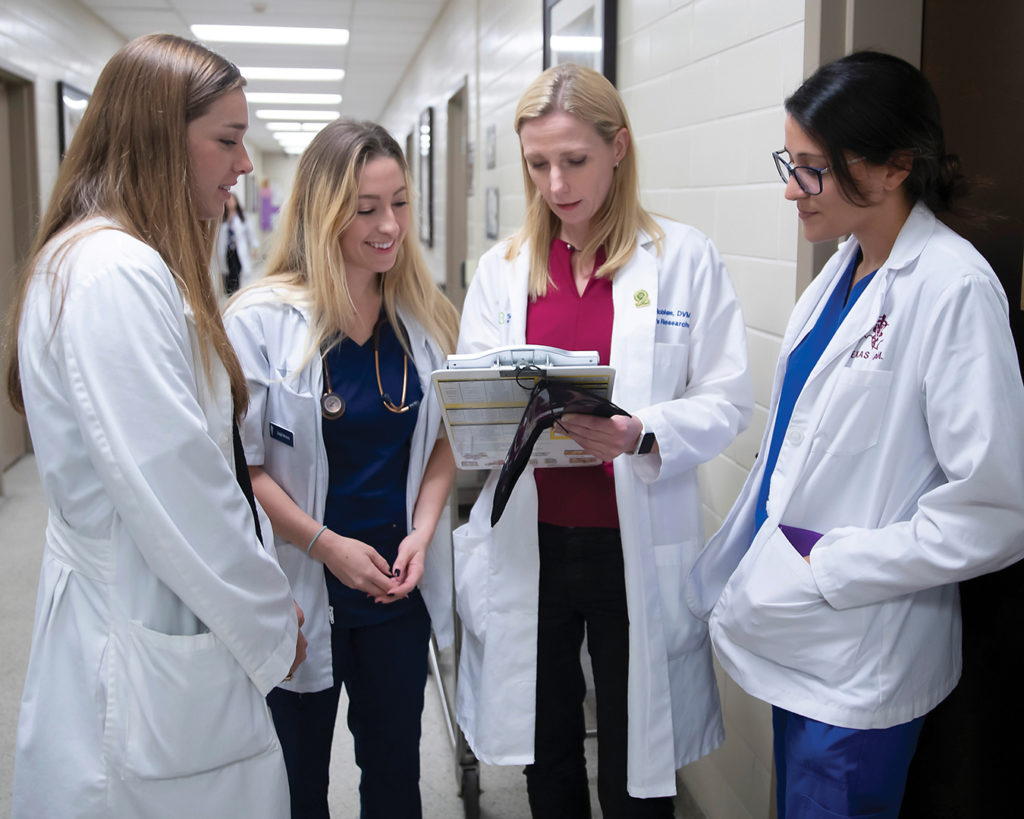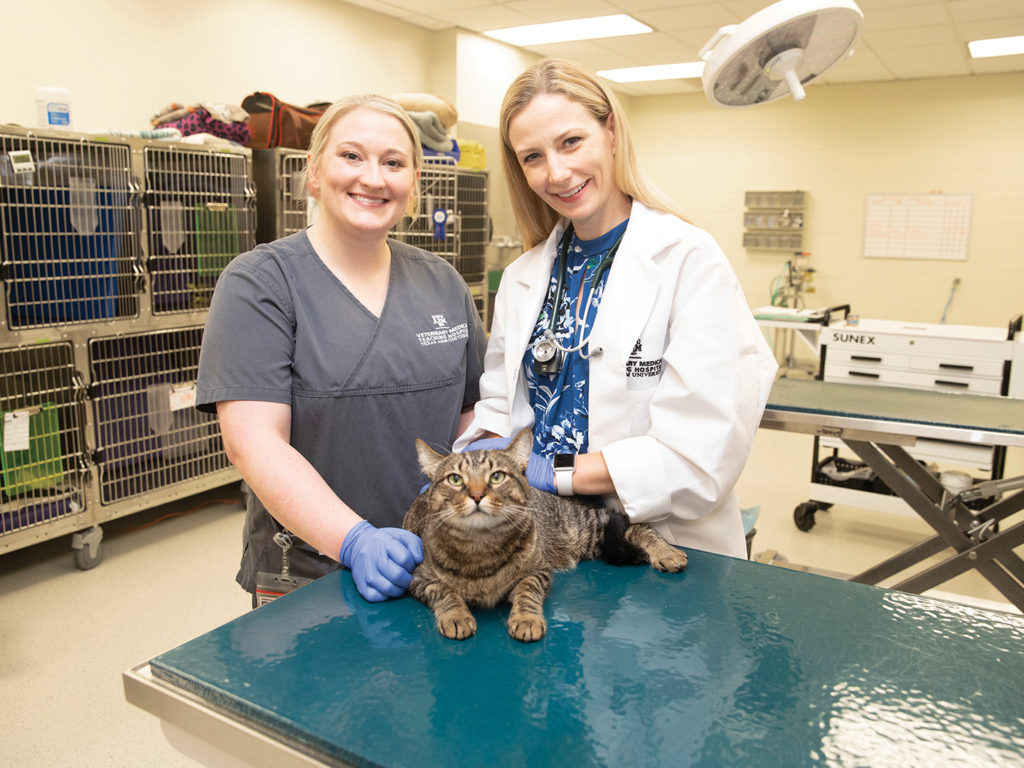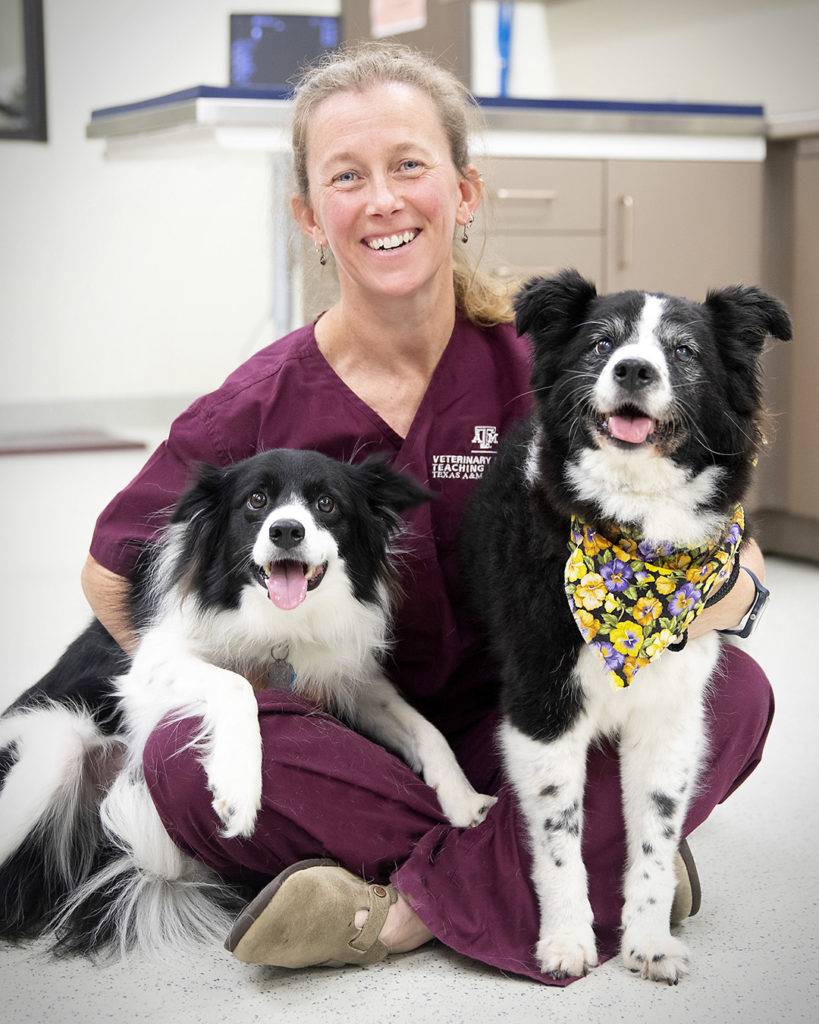Creating a Culture to Cure
Over the past decade, the Texas A&M Small Animal Hospital has worked to increase the number of clinical trials being conducted, including a recently established trials core led by Dr. Heather Wilson-Robles, all with the hopes of improving the lives of animals and their humans.

When Dr. Heather Wilson-Robles came to the Texas A&M College of Veterinary Medicine & Biomedical Sciences (CVM) in 2007, a few services were conducting clinical trials at the Veterinary Medical Teaching Hospital (VMTH).
But the Small Animal Hospital (SAH) did not have the fully immersed trials culture she had experienced during her medical oncology residency at the University of Wisconsin.
Studies conducted under controlled conditions using objective methods of gathering and assessing data take many, many years, but the process is worth it for researchers. Trials are critical to the process of developing new drugs, procedures, and other tools used for treating both pets and humans, and many medical breakthroughs have resulted from these studies.
When Wilson-Robles brought her clinical trials experience to Texas A&M, she became one of the first to conduct a therapeutic trial in her new “home” service of oncology and aspired to expand that culture within the SAH.
Twelve years later, Wilson-Robles, the Dr. Fred A. and Vola N. Palmer Chair in Comparative Oncology and assistant head of research in the Department of Small Animal Clinical Sciences (VSCS), is working to guide other researchers in the complicated process of preparing, conducting, and maintaining these trials as the leader of the department’s newly created clinical trials core.
Through this core, she and oncology colleague Dr. Emma Warry are scheduling trainings for hospital house officers and veterinary technicians, who are crucial to the trials process, on gaining consent, completing documentation, and maintaining Good Clinical Practices standards. They are also working to increase trials communication across services and to help principal investigators write Animal Use Protocols, the documentation required for any researcher working with animals at Texas A&M.
“We’re really trying to make these support systems more commonplace so that every researcher doesn’t have to build a program from the ground up,” she said.
The Benefits Of Clinical Trials

Why are clinical trials so important?
For Wilson-Robles, the answer is partly personal—her dog Otis, an 11-year-old Catahoula mix, has directly benefited from experimental therapies for his metastatic hemangiosarcoma, a type of cancer that develops from the cells that normally create blood vessels.
“Clinical trials give pet owners like me potential access to medications and therapies we could not access anywhere else—cutting-edge treatments that may not even be available to people yet,” she said. “I wouldn’t be part of any trial that I would not be willing to enroll my own dog in.”
The answer also is partly professional.
“Clinical trials really move the needle forward,” she said. “Disease progresses faster in animals, so we can see real benefits in a shorter time, which is useful. They also give us access to colleagues in human hospitals. All of this helps us grow as researchers and scientists.”
Their trials also fulfill the SAH’s mission of innovative teaching; as residents and students learn about the process and its importance, clinicians are not only creating the next generation of researchers, but helping budding veterinarians understand how the drugs they use get approved is “hugely beneficial,” Wilson-Robles said.
Furthermore, clinical trials lead to win-win relationships with external partners. When the CVM helps a company conduct a study, both benefit.
“During my residency, I saw how my mentors worked with a private company and human cancer researchers to validate a new delivery system for radiation therapy,” Wilson-Robles said. “Though the system was created for human use, the validation occurred in dogs with nasal tumors. This system is now commercially available all over the country at various cancer centers, as well as two veterinary institutions, including Texas A&M, for the treatment of cancer in both humans and animals.”
Measuring Success In Clinical Trials

There’s a reason the process for developing and bringing a drug to market is long and arduous.
“Sometimes you can say, ‘I’ve got this great thing that worked well,’ but that is the case only about one time in 100,” Wilson-Robles said.
“Success can be as simple as learning the right way to give a drug. Say we determine that a drug needs to be given once a week, intravenously, and at this dose and with these other medications,” she said. “When the trial gets to the point of involving humans, the researchers can do a much better job of designing it to reduce side effects or increase efficacy, which means the study has a better chance of succeeding. It also makes the process more efficient financially, possibly reducing the cost of the drug later.”
Success also means saving 100 people from getting the wrong dose, or the wrong supportive medications. Or maybe a drug doesn’t kill cancer cells, but keeps them from spreading—that’s still success.
Putting Animal Welfare First
Clinical trials benefit sick pets by treating them with the newest and most promising medications that one day might also help heal other animals and, eventually, even humans with the same condition.
Participation usually means frequent visits to the SAH, since tests and procedures must be administered in a controlled, laboratory setting in order to ensure consistency, but pet owners typically receive financial incentives for participation.
And as always, the animal’s best interests come first throughout the process. An animal may be removed from a clinical trial at any time, by either the pet’s owner or the CVM veterinarian, if it is best for the pet.
Furthermore, clinicians follow the strict protocols from the CVM, Texas A&M, and other regulatory organizations.
Participants are recruited for clinical trials in two ways—clinicians often ask SAH clients to enroll eligible pets and clinicians also post on the CVM’s Clinical Trials website.
###
Note: This story originally appeared in the Fall 2019 edition of CVMBS Today.
For more information about the Texas A&M College of Veterinary Medicine & Biomedical Sciences, please visit our website at vetmed.tamu.edu or join us on Facebook, Instagram, and Twitter.
Contact Information: Jennifer Gauntt, Director of CVMBS Communications, Texas A&M College of Veterinary Medicine & Biomedical Sciences; jgauntt@cvm.tamu.edu; 979-862-4216



